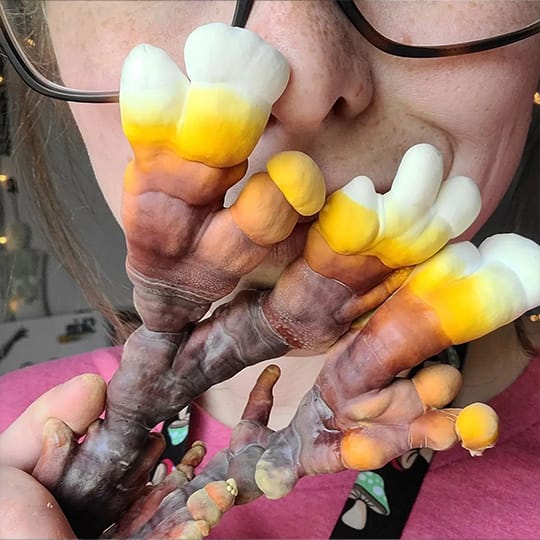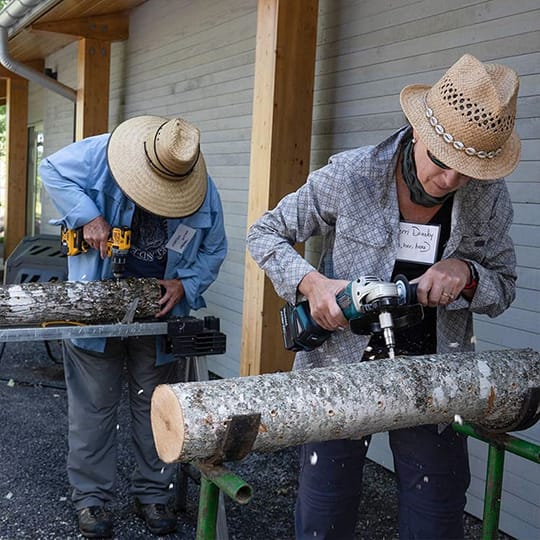

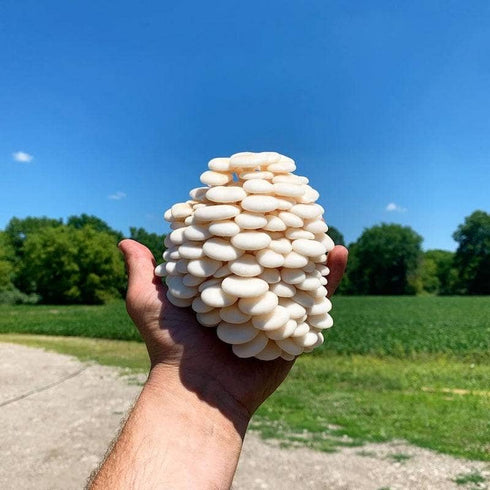
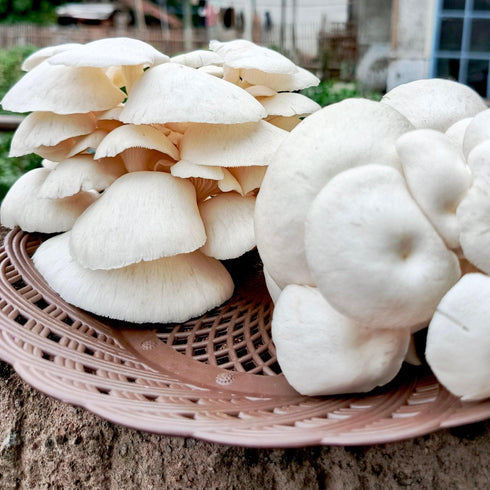
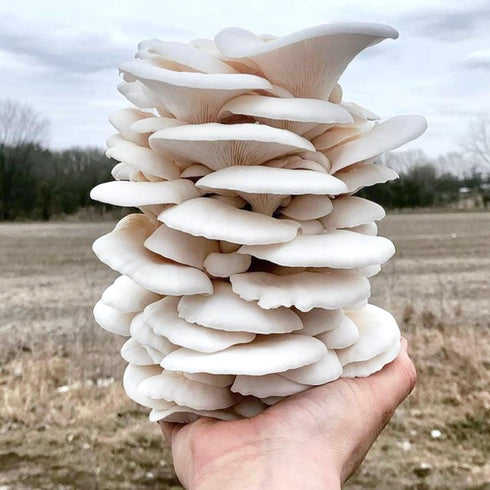
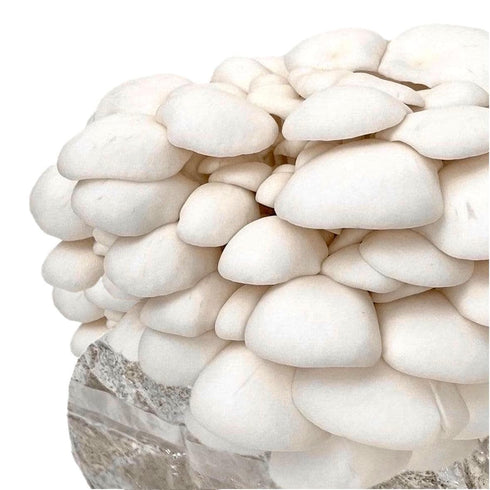











| Skill level | Intermediate |
| Grow location | Outdoors |
| Grow speed | 1 to 2 weeks |
| Shelf life | 6 months (refrigerated) |
| Kit dimensions | 6in H x 9in W x 6in D |
| Kit weight | 5 lbs |
| Fruiting temps | 45-65°F |
Pleurotus ostreatus | USDA Certified Organic
Bring delicate flavor and texture to your garden with our Snow Oyster Plant & Grow Garden block. This USDA Certified Organic strain produces clusters of firm, white to cream-colored mushrooms that hold their shape well when cooked. Their mild, sweet flavor and aroma make them a favorite for a variety of dishes.
Snow oysters thrive in cooler, shaded garden spots and are perfect for beginner mushroom growers. Once planted in the soil and kept moist, they reliably produce generous flushes of mushrooms. With proper care, you can expect multiple harvests throughout the growing season.
-
Remove kit from the shipping box as soon as possible. Then, unfold the top of the bag, making room for air space. It's also important to check and confirm that the filter patch is not obstructed. This will help the organism breathe and continue to thrive until you are ready to grow your fruiting block!
-
Snow Oysters are a cool-weather species that thrive in the shoulder seasons of spring and fall. With their elegant white caps and savory flavor, they're an excellent addition to shaded garden beds or forest edges.
How to initiate fruiting outdoors:
- Site selection: Choose a shady, cool area—ideally under trees or along a north-facing wall. Snow Oysters are especially sensitive to heat and sunlight.
- Burying the block: Remove the plastic entirely from the block and bury it with about 1" of woody material or soil on top.
Temperature & humidity:
- Ideal temps are below 65°F. If outdoor temps are warmer, consider deeper burial, additional mulch, or planting in a microclimate (such as near a cool rock wall or in the shade of evergreens).
- Maintain high humidity during the pinning phase. In dry conditions, gently mist the area twice a day to prevent surface drying.
What to watch for:
- Discoloration or blotch may occur if snow oysters are exposed to too much heat or if humidity drops.
- Ensure air circulation around the fruiting site to prevent stagnation and CO₂ buildup, especially if you’re using mulch or a protective dome.
Harvesting:
- Pick clusters when the cap edges are still slightly curled under. Avoid letting caps fully flatten—this reduces shelf life and flavor.
- Use clean hands or scissors to gently remove clusters. Snow oyster caps are delicate, so handle with care.
With the right conditions, Snow Oysters will reward you with tender, snowy white mushrooms perfect for sautés and soups. This species is a fantastic choice for gardeners in cooler climates looking to extend their growing season.
-
Temperature 45-65°F | 7-18°C Humidity (Phase 1: Primordia) 95-100% Humidity (Phase 2: Fruitbody) 85-95% CO2 Sensitivity (Phase 1: Primordia) <1,000 ppm CO2 Sensitivity (Phase 2: Fruitbody) <1,000 ppm - Primordia - The earliest recognizable stage of fruitbody development. Also known as “baby mushrooms” or “mushroom pins.”
- Fruitbody - A fully grown mushroom, the reproductive structure of the organism in which the spores are produced.
- CO2 sensitivity - When CO2 levels are too high, yields will decrease, stems will become long and stringy, caps will be small, and/or growth will halt.
-
If you don't plan to use immediately, you can refrigerate your block for up to 6 months.
-
“5 of the Best Snow Oyster Mushroom Recipes”
The classic North Spore recipe is to slice up oyster mushrooms and sauté them in a heavy pan on medium heat with butter, garlic, and loads of fresh thyme and rosemary (or whatever other herbs you happen to have on hand!) Cook until the mushrooms have released their liquid, then continue cooking until that liquid has cooked off and the mushrooms begin to brown. Deglaze your pan with a splash of white wine, reduce once more, and finish with a touch of heavy cream. Season generously with salt.Like all Oyster mushrooms, they retain water and may develop a viscous texture when under-cooked. If you prefer a firm or dryer texture, continue to cook Oysters until their liquid has reduced and cooked off and they begin to brown.
-
If you’re going to consume home-grown mushrooms, make sure to cook your fresh mushrooms thoroughly with heat. If it is your first time eating this species, it is best to start with a small amount to check for allergies, even if cooked.
Mushrooms grow spores as they develop. This is a natural means of reproduction. This is when people with allergies or compromised immune systems may want to consider putting fruiting mushroom kits outdoors or in a well-ventilated area. Spores in mushrooms sometimes cause respiratory irritation. In rare cases, spores may also cause irritation for some non-allergic or non-immunocompromised mushroom growers. If you are one of them, it is recommended to reduce the overall spore load by harvesting mushrooms while they are still in their younger growth stages.
You may also like
Making the world of mushrooms accessible to all
North Spore was launched in 2014 by a mycologist, an organic farmer, and a photojournalist -- three college friends brought together through their shared love of the mycological world.
What began as a simple love for mushroom foraging and cultivation quickly developed into an obsession with all things fungi. From there, an urban mushroom farm was born, as was the desire to spread the spore to the masses.
 i
i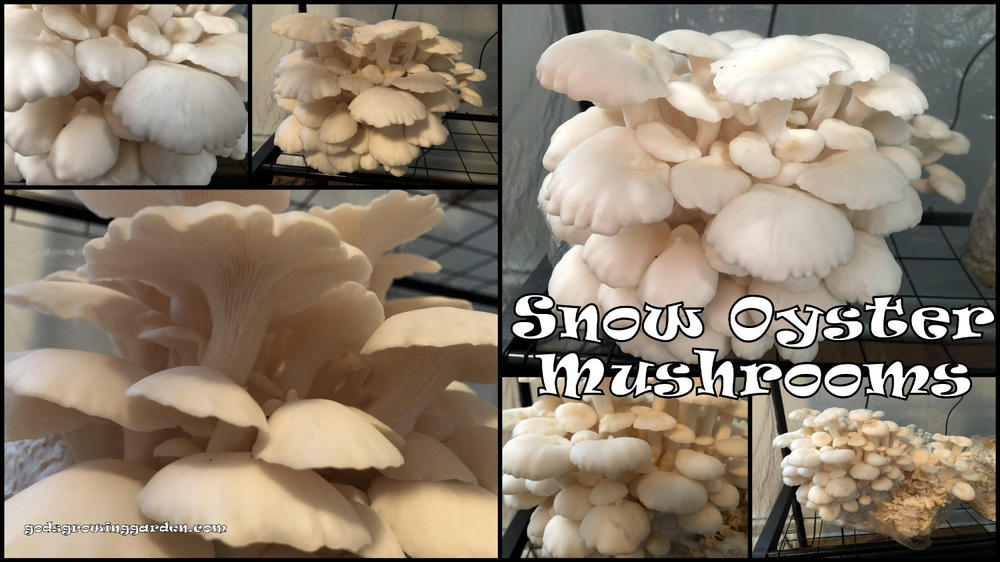 i
i i
i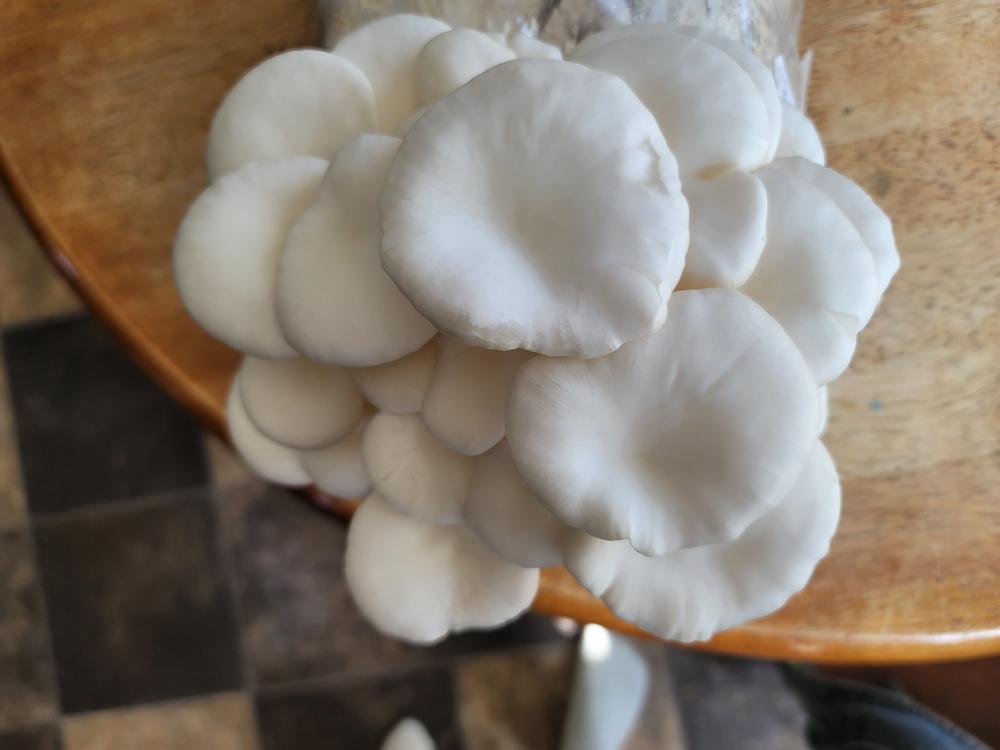 i
i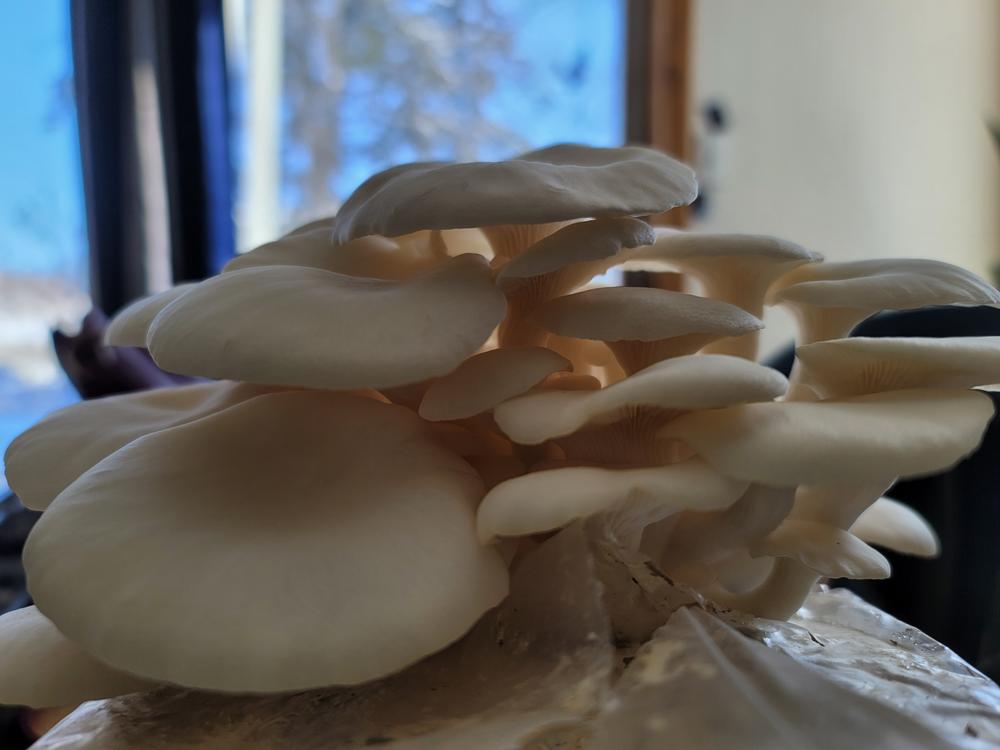 i
i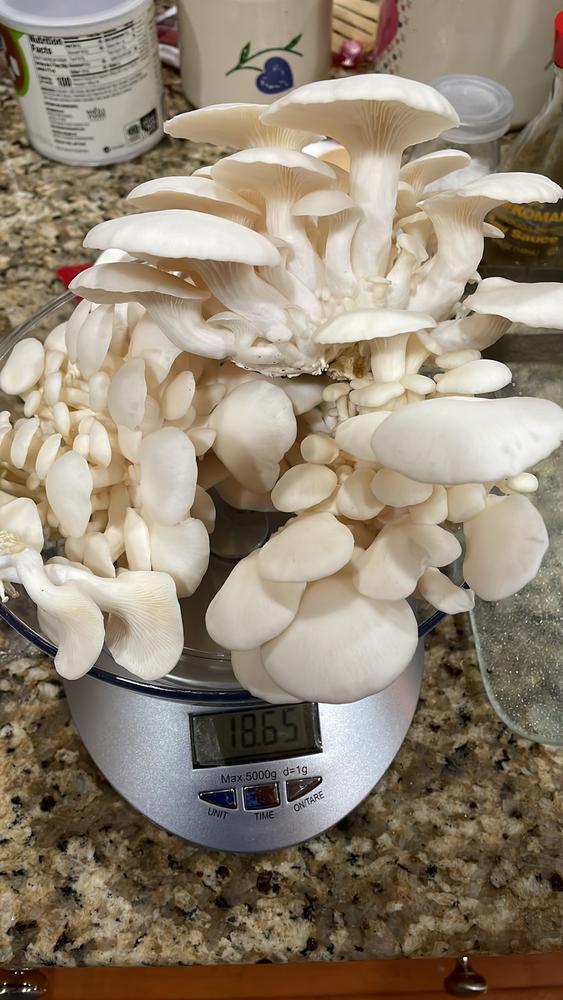 i
i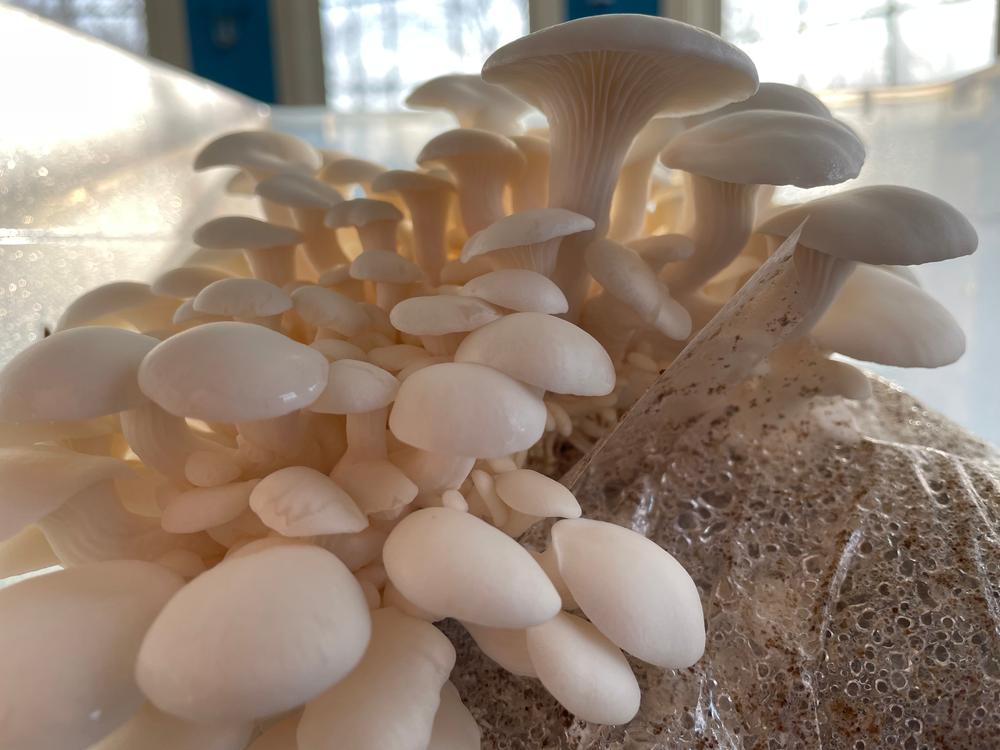 i
i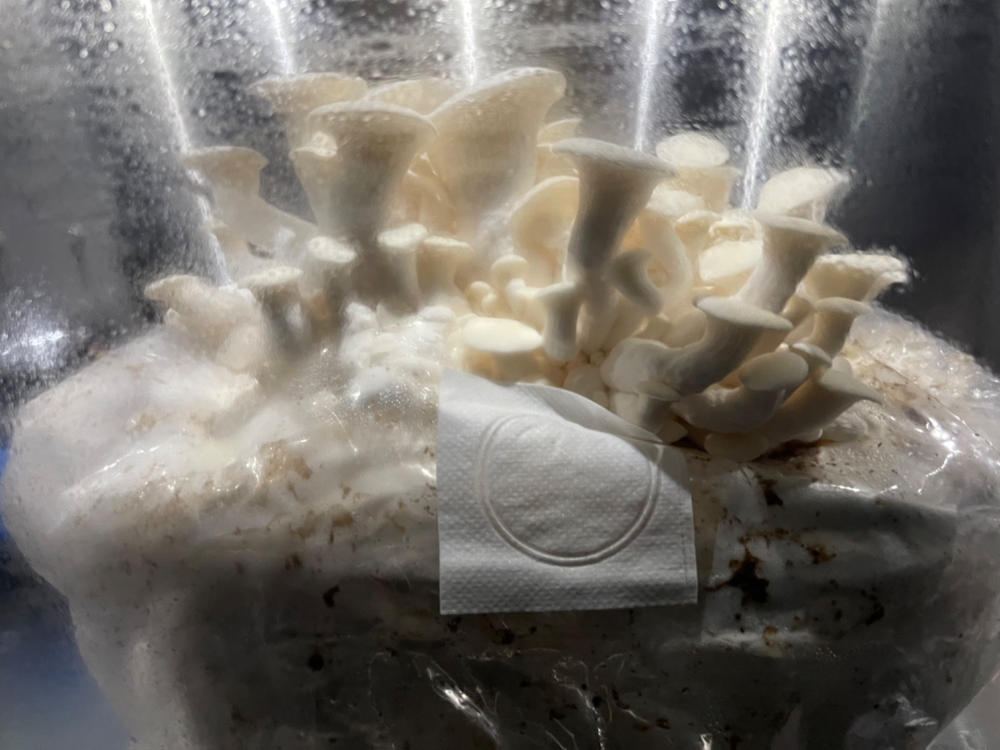 i
i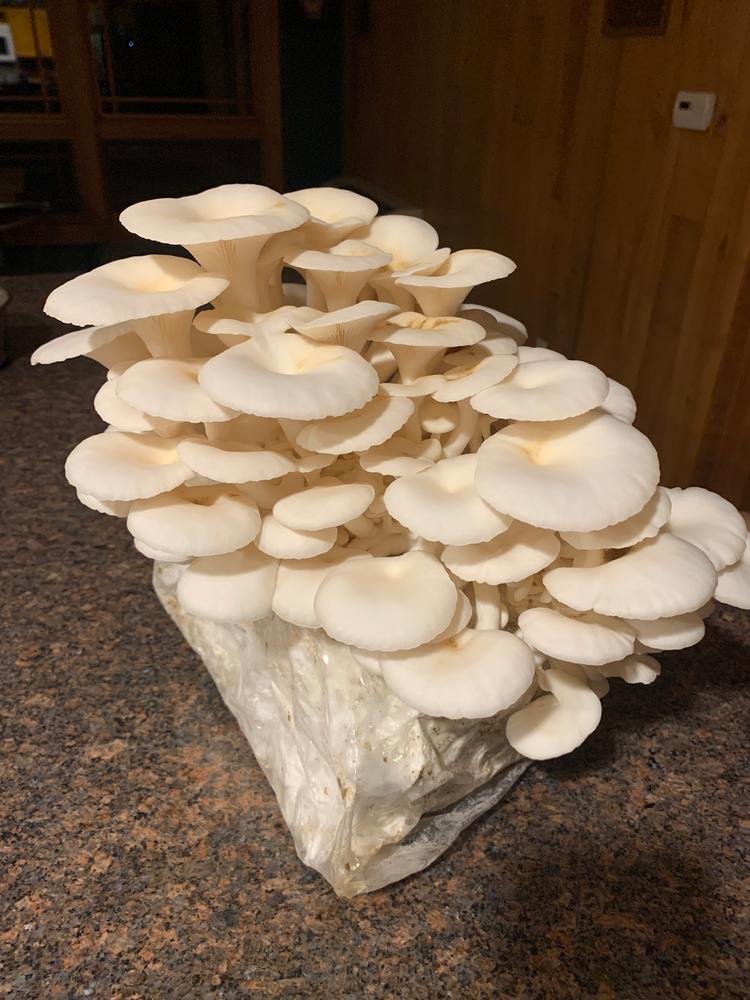 i
i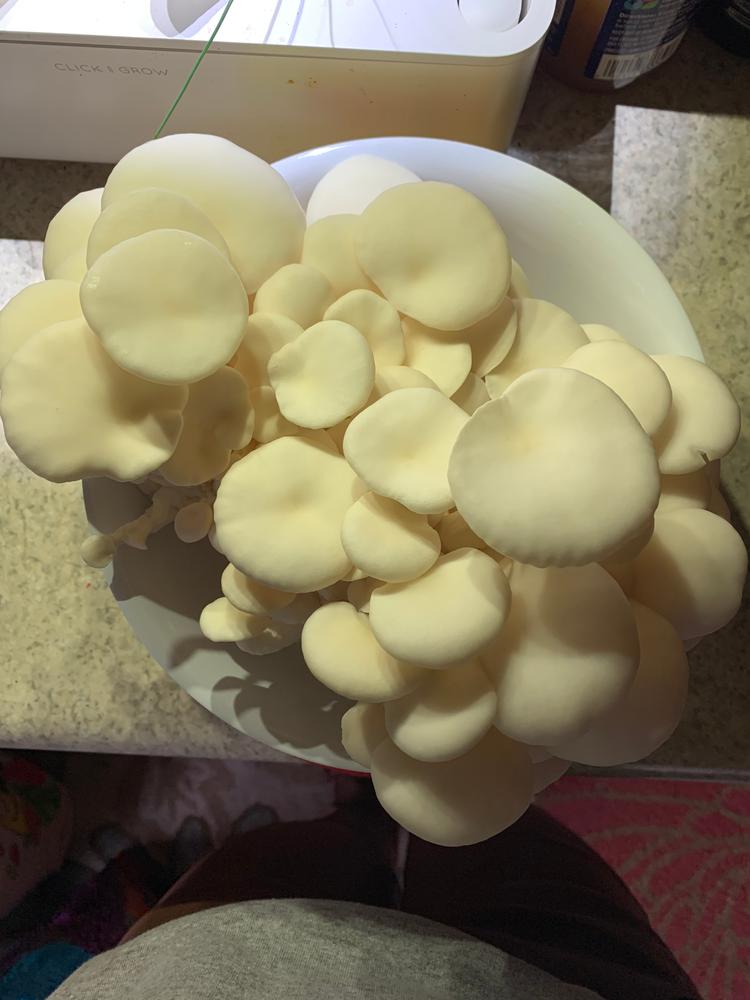 i
i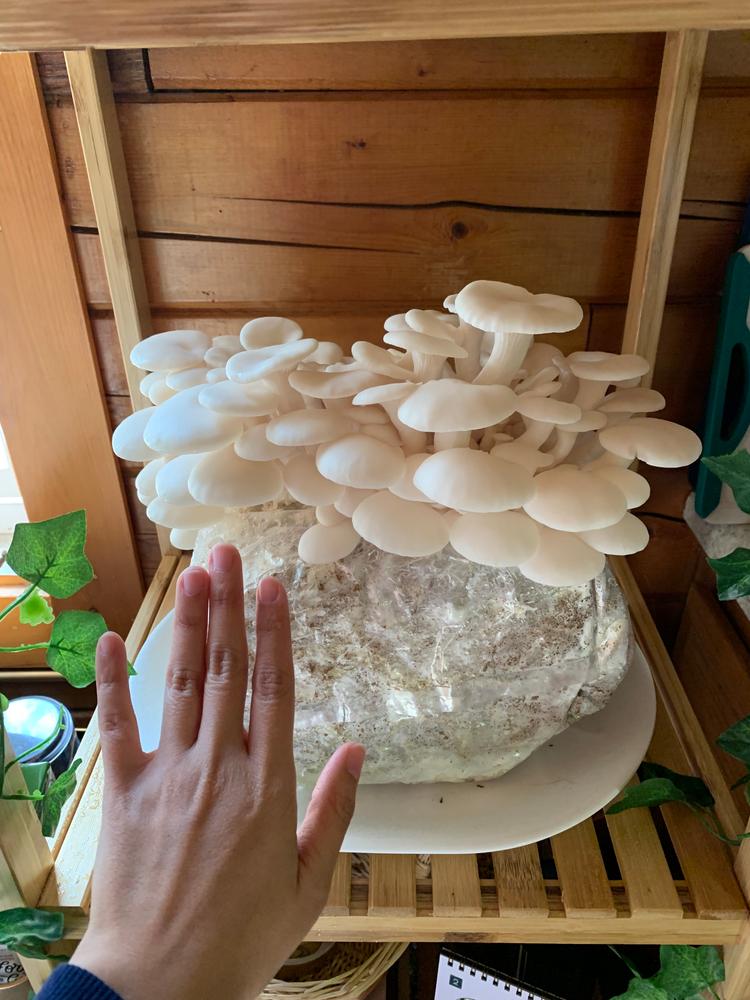 i
i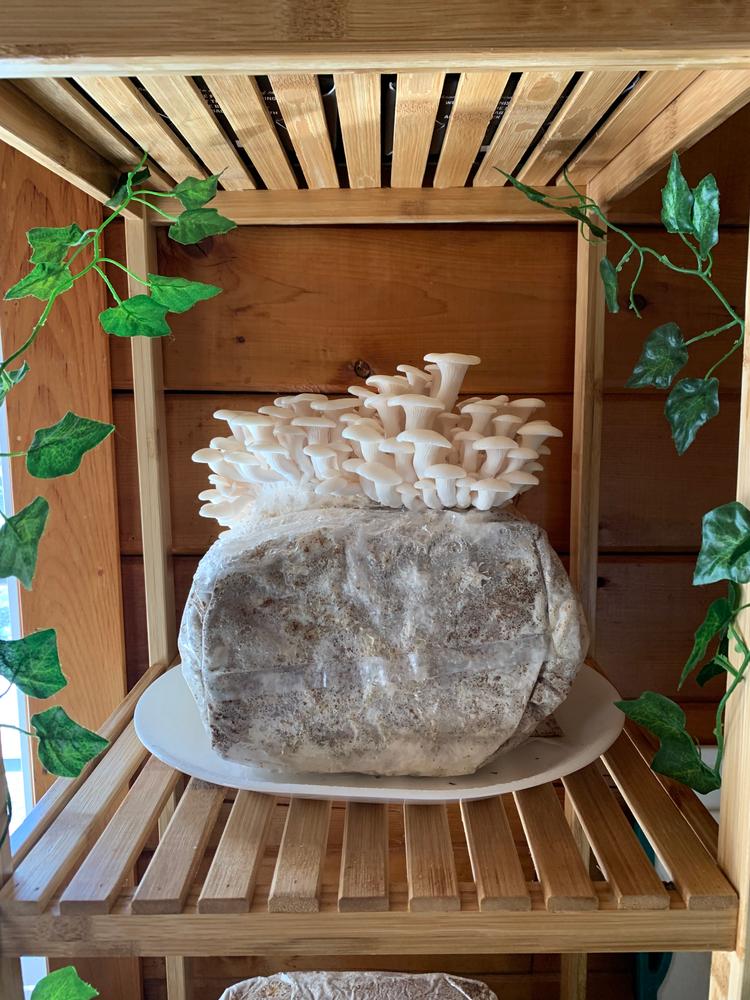 i
i- Reviews
- Questions
Thank you for submitting a review!
Your input is very much appreciated. Share it with your friends so they can enjoy it too!
Incredible!!!
Five days into putting these blocks into my Martha tent set up and it's like they grow by the hour!!!
Perfect
Came fully colonized. Already pinning
North Spore
Thanks for sharing, Justin! If you need help with anything, please reach out.
Mushroom Harvest
It was was great experience growing the mushrooms. They grew so large he so fast I no smaller ones to harvest!! They tasted delicious.
North Spore
Thanks for sharing, Jen! We're so happy you're enjoying the experience.
Snow Oyster - The Best of the Oysters
I have grown almost all of the oyster mushrooms available in fruiting block form (Blue, Italian, Pink, Golden, Black King & Snow - the only variety I have yet to grow is the King Trumpet). I find the Snow Oyster to be most mild in flavor and the most tender in texture - almost like butter. Plus, this variety is very prolific. PS - I wanted to attach a picture but was unable to so here is a link to my blog showing that picture: https://www.godsgrowinggarden.com/2023/05/fungi-fascination-homegrown-for-3-years.html
North Spore
Your snow oysters look amazing, Angie! Thanks for taking the time to share your experience.
Colonizing nicely waiting for first pins
North Spore
Thanks for sharing, Russle If you need help with anything, please reach out.







